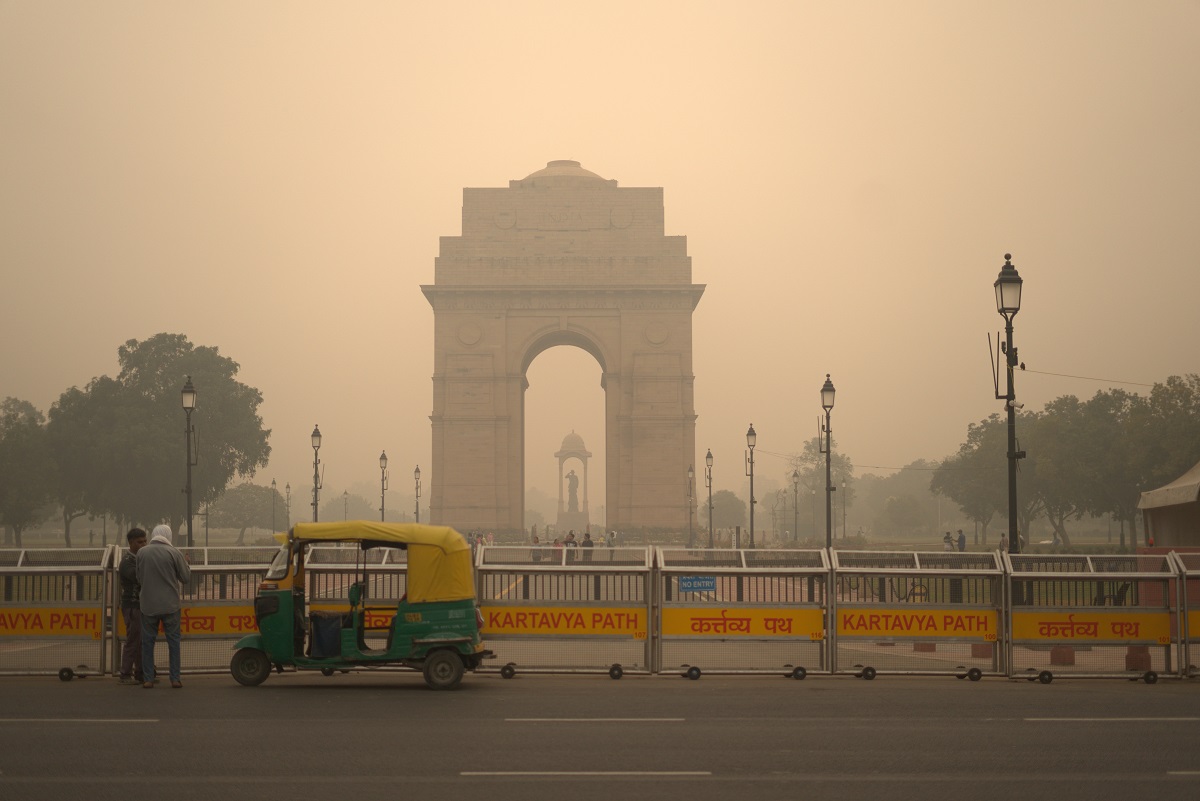Delhi’s air quality has further worsened and now approaches the brink of the “severe plus” category, signalling a potential activation of the odd-even car rationing scheme in the capital.
At 7 am, the city’s air quality index stood at 437, a decline from 419 recorded at 4 pm on Thursday.
The average 24-hour AQI for Delhi was 401 on Wednesday, 397 on Tuesday, 358 on Monday, 218 on Sunday, 220 on Saturday, and 279 on Friday.
The relatively cleaner air witnessed last weekend is attributed to rainfall. However, the subsequent days saw a spike in air pollution due to extensive Diwali firecracker bursting and a resurgence in stubble burning in nearby states.
These factors were exacerbated by unfavourable meteorological conditions, notably stagnant winds and low temperatures, which impeded the dispersion of pollutants. Surrounding areas such as Ghaziabad (374), Gurugram (404), Greater Noida (313), Noida (366), and Faridabad (415) also reported very poor to severe air quality levels.
The categorisation of AQI ranges from zero to 50 as good, 51 to 100 as satisfactory, 101 to 200 as moderate, 201 to 300 as poor, 301 to 400 as very poor, 401 to 450 as severe, and above 450 as severe plus.
Earlier this week, Delhi’s Environment Minister Gopal Rai had hinted at reinstating the odd-even car rationing measure if the AQI surpasses the 450-mark.
The scheme, enforced four times since 2016, permits vehicles to operate on alternate days based on the odd or even last digit of their registration numbers. Its last implementation was in 2019.
The government postponed its enforcement last week following a notable improvement in air quality attributed to Friday’s rainfall.
Recent findings from a collaborative study by the Delhi government and IIT-Kanpur revealed that vehicular emissions accounted for approximately 38 percent of the capital’s air pollution on Wednesday, reduced to 25 percent on Thursday.
Secondary inorganic aerosols, comprising particles like sulphate and nitrate formed due to the interaction of gases and particulate pollutants from sources such as power plants, refineries, and vehicles, contributed 30 to 35 percent to Delhi’s pollution in recent days.
With stagnant winds and low temperatures persisting, the accumulation of pollutants is expected to continue, and relief seems unlikely in the coming days, an official from the India Meteorological Department (IMD) said.
An increase in wind speed starting November 21 may lead to a reduction in air pollution levels, the official added.
Despite the state government’s stringent measures, including a ban on construction activities and the entry of diesel trucks into the city, Delhi’s air quality has deteriorated.
According to IQAir, a Swiss air quality monitoring company, Delhi ranked as the most polluted city globally on Thursday, followed by Baghdad and Lahore.
A system developed by the Indian Institute of Tropical Meteorology in Pune indicated that stubble burning contributed 7.5 percent of Delhi’s air pollution on Thursday, expected to decrease to 3.5 percent on Friday and 3 percent on Saturday.
An official from the Commission for Air Quality Management (CAQM) mentioned that strict measures outlined in the Graded Response Action Plan (GRAP), including bans on construction and entry of polluting trucks, would persist in Delhi until further notice.
On Thursday, the Delhi government established a six-member special task force to ensure strict implementation of GRAP measures. The task force, headed by Delhi’s special secretary (environment), comprises senior officials from transport, traffic, revenue, Municipal Corporation of Delhi, and Public Works Department.
Medical experts highlighted that inhaling Delhi’s polluted air is akin to the harmful effects of smoking around 10 cigarettes a day.
Extended exposure to heightened pollution levels can cause or exacerbate respiratory issues like asthma, bronchitis, chronic obstructive pulmonary disease (COPD), and significantly increase the risk of cardiovascular diseases, they warned.
Unfavourable weather conditions, combined with vehicular emissions, paddy-straw burning, firecrackers, and other local sources of pollution, contribute to hazardous air quality levels in Delhi-NCR during winters.
An August report from the Energy Policy Institute at the University of Chicago (EPIC) stated that air pollution is shortening lives by nearly 12 years in Delhi. (With inputs from PTI)





